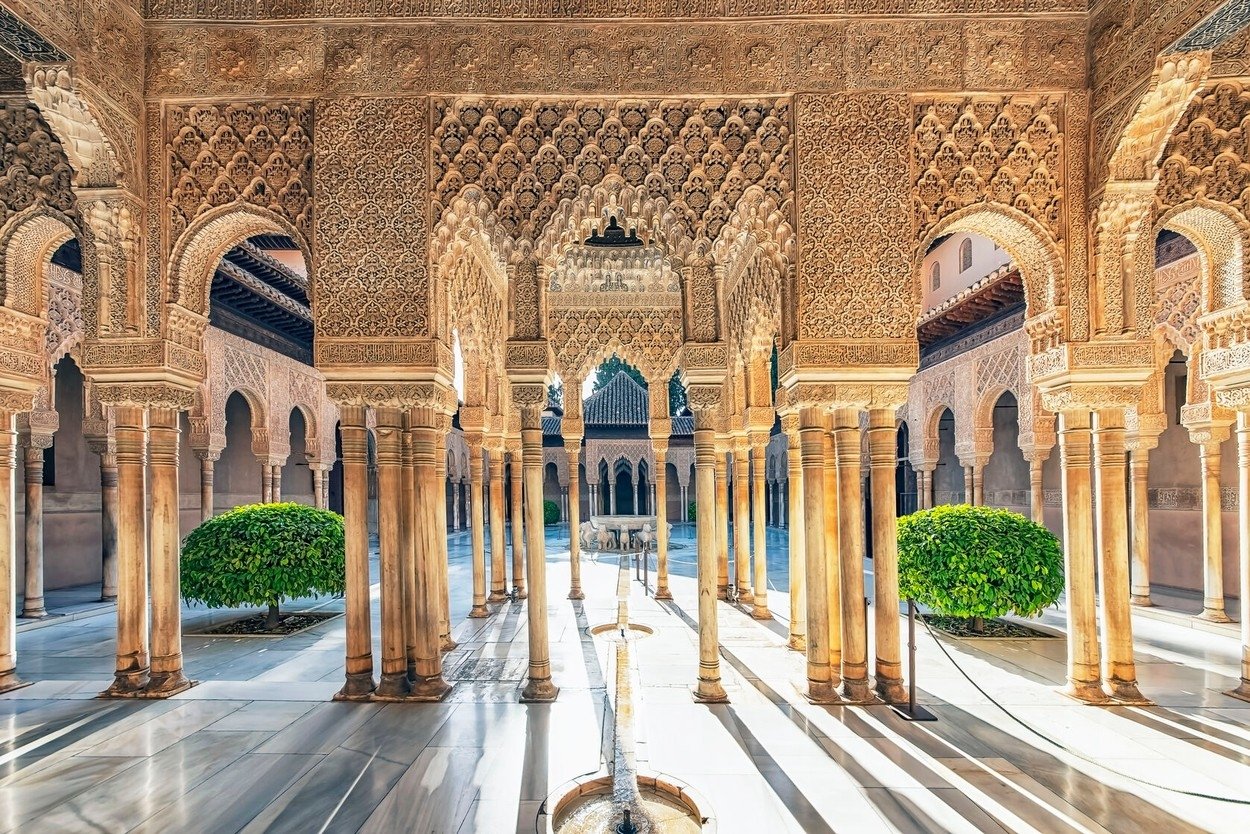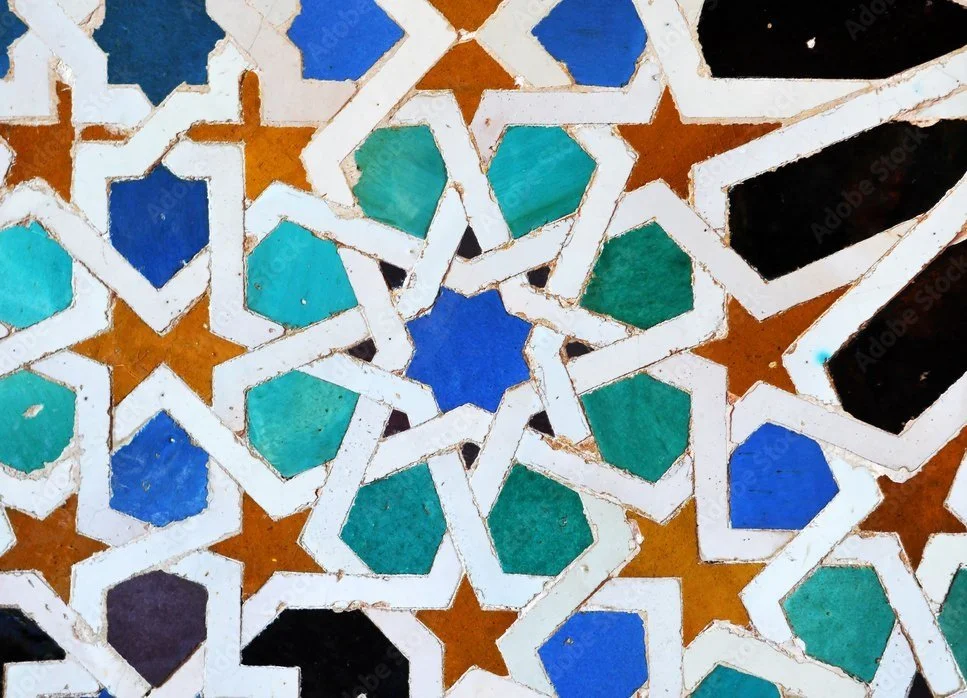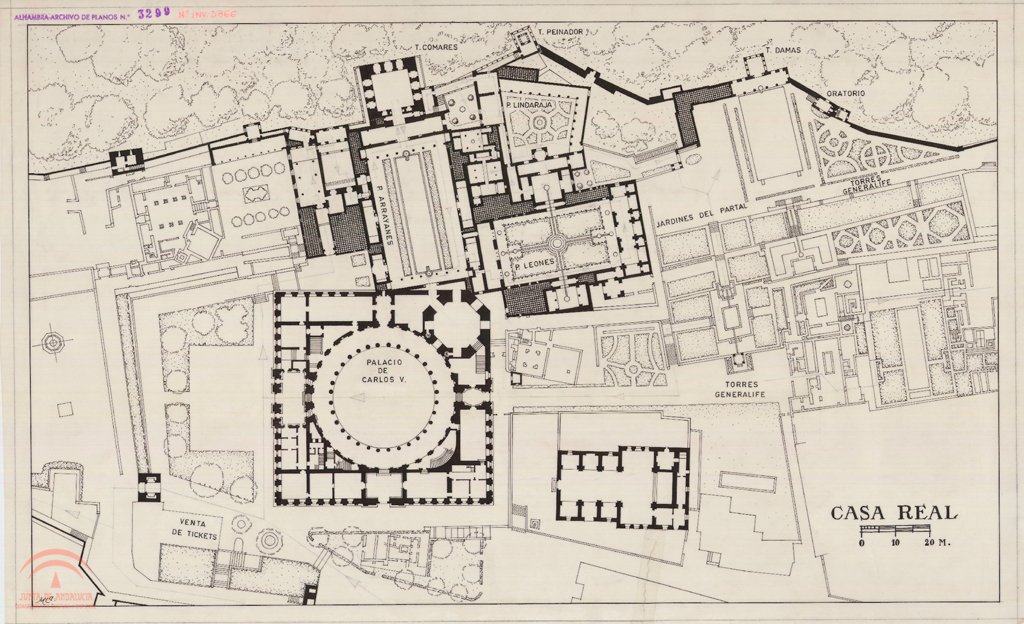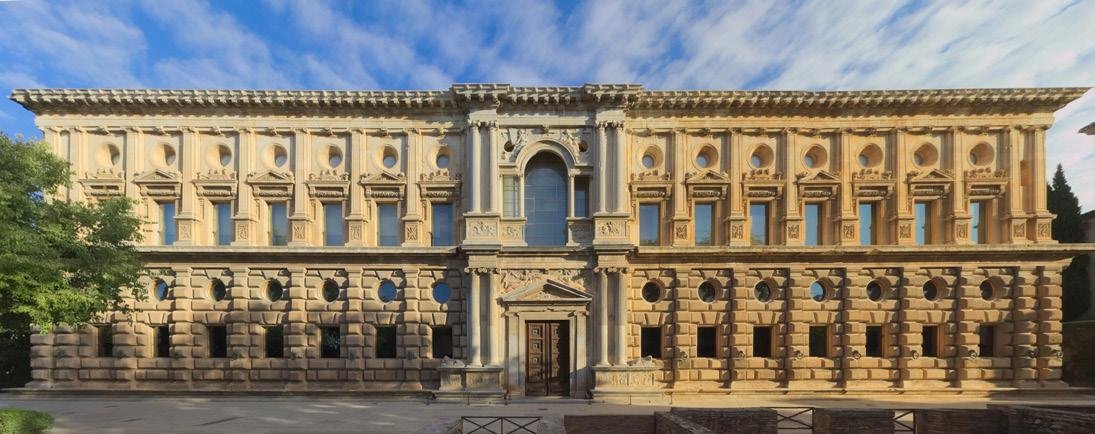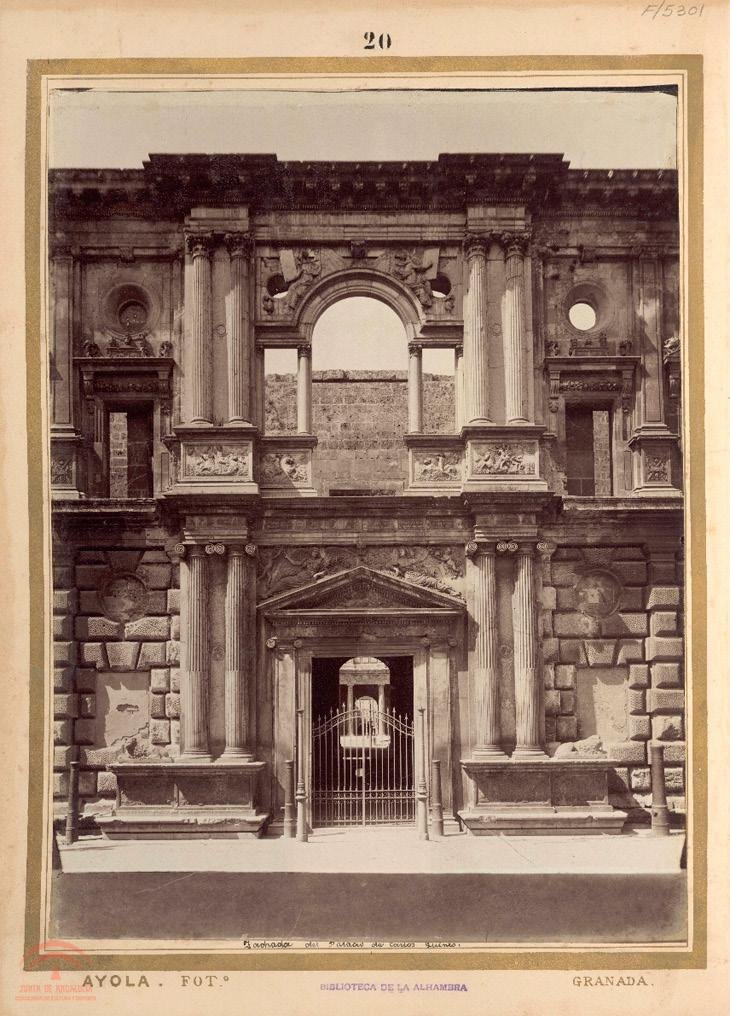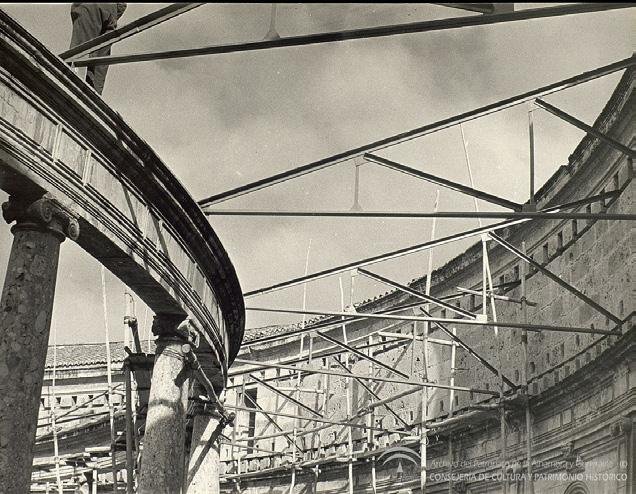Palatine Chapel, royal chapel of the Norman Palace in Palermo, Sicily, 1132
Charlemagne's Empire, 812
san vitale / aachen
Medici and Strozzi palaces in Florence
Palazzo Venezia, the Palazzo della Cancelleria and Palazzo Farnese in Rome
Palazzo Thiene in Vicenza
……Teatro Marittimo at Hadrian’s villa adds a possible Spanish and Imperial allusion, given Hadrian’s Spanish origins….the conception and design of the palace must have been encouraged by the idea that because of the vast territories he ruled in and beyond Europe and his defence of the Christian world and confrontation with the Ottoman Empire Charles was an Emperor comparable to the great Roman Emperors, among whom were those of Spanish origin…..
……The points of departure for the design would have been the idea of an Imperial palace for Charles, expressive of his role and importance, and the significance of Granada and the site itself. These two elements were connected…..The story starts with the general political situation from 1525 until 1535 and beyond: Charles V’s vast territories, his ongoing effort to contain Ottoman expansion, his victory over Francis I and continuing rivalry with him and his conflict with Clement VII which was military, diplomatic but also ideological and waged through publications and polemics. All these elements, de facto, re-defined the position of the Emperor and necessitated the elaboration of a new personal and imperial image, to which the palace was intended to contribute……
…….in Granada in 1526 there were two leading Italian intellectuals, Castiglione and Navagero, who had not only been close friends of Raphael, but had also formed part of the small group of those who had visited Tivoli and Hadrian’s villa in April 1516 with Raphael. They had therefore almost certainly seen the Maritime Theatre……..after the powerful idea of the circular colonnaded court at the centre of a squarish palace with an exterior with its principal facades articulated by a Doric rusticated order below and an Ionic one provided the foundation of the design, did Giulio Romano provide a design, or was Pedro Machuca, after his years in Rome, capable of making a design of such bold and allusive sophistication? Or was there some mix of inputs: a basic design by Giulio, modified by Machuca?…..
……Among the main ingredients of the façade design are a rusticated Doric (or given the capitals, Tuscan) lower level which recalls Giulio Romano but does not correspond exactly to any of his works; Cesariano’s volutes and pilasters with entasis and inset panels; a Tuscan portal perhaps derived (for the bases) from either Fra Giocondo’s 1511 edition or the Medidas del Romano; the abbreviated entablature used by Raphael, Sangallo and Sanmicheli; the insertion of roundels above the windows, ultimately inspired by designs of Raphael and Sangallo and perhaps even by an aureus of Trajan and even Sanmicheli’s use of entasis with rusticated Doric pilasters. From Giulio (or simply from the fresco showing a serliana in the Sala di Costantino?) is probably derived the upper level window of the south portal, showing an “imperial” serliana structure…….
…….All the final design decisions were probably made by Mendoza and Muchuca, sometimes acting as designers, sometimes as editors or selectors of motifs present in books they owned or projects or other drawings which they had obtained…..Machuca, by coordinating these choices in the final drawings, as well as himself inventing and designing and making the full scale templates for details, would have often had the last word……
——Se trataría de una suerte de simbiosis cultural en la que aspectos iconográficos de una cultura se transmiten a otra, con toda su fuerza y carga simbólica, y terminan por convivir juntos en un nuevo organismo artístico abierto a nuevos significados. Lo explica Erwin Panofsky al estudiar el paso de la imágenes clásicas hacia el Renacimiento: es evidente que esta reintegración no podía constituir un simple retorno al pasado clásico. El período intermedio había modificado la mentalidad de los seres humanos, hasta el extremo de que les era imposible volver a ser paganos de nuevo, y había asimismo alterado sus gustos y sus tendencias creativas hasta el punto de que su arte no podía limitarse a renovar el de los griegos y los romanos. Tuvieron, pues, que esforzarse por descubrir una nueva forma de expresión, estilística e iconográficamente diferente de la clásica, así como de la medieval, aunque deudora y relacionada con entrambas——




















































